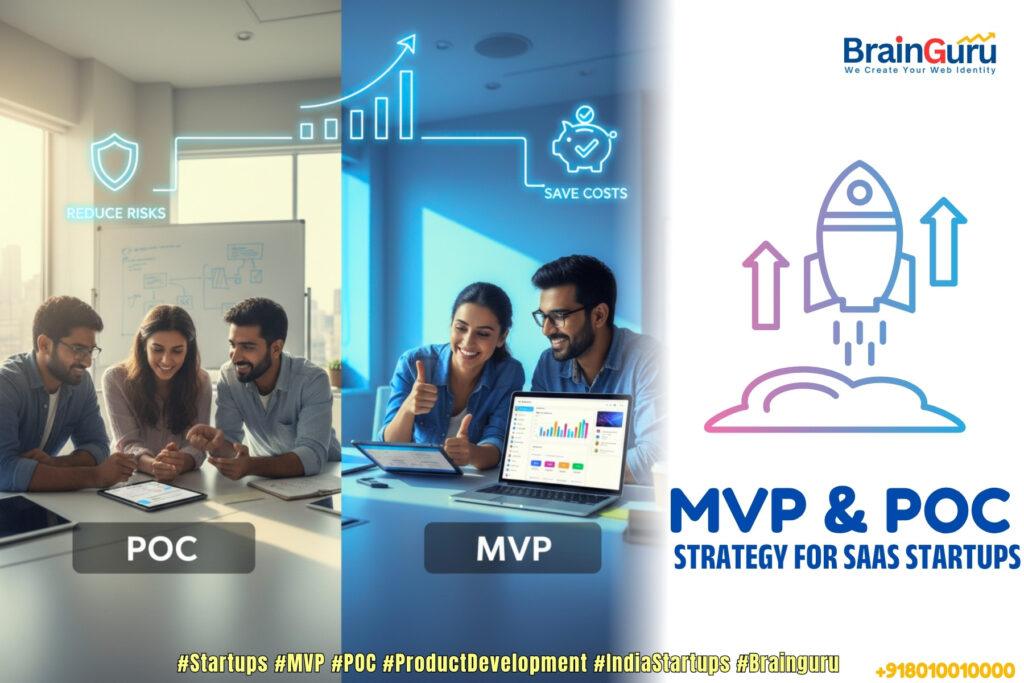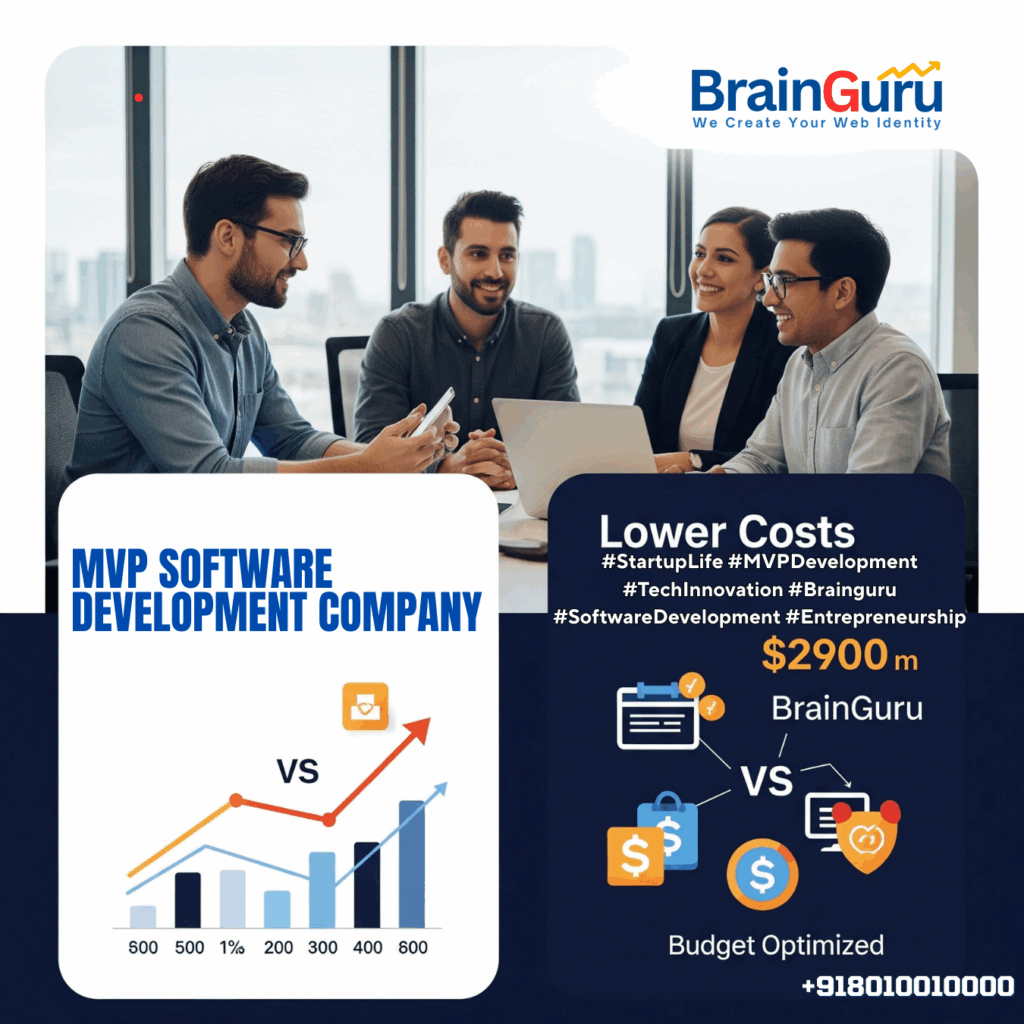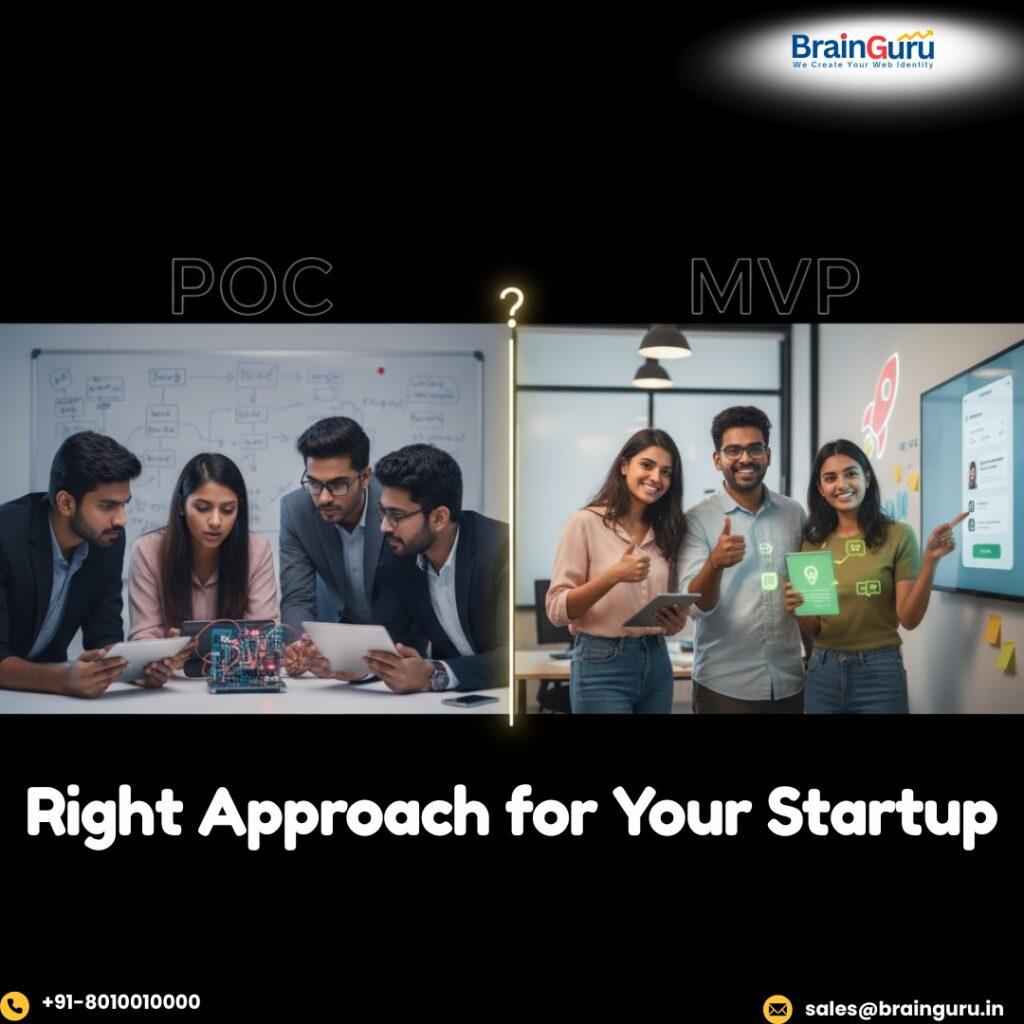
Launching a successful SaaS startup begins with more than just a great idea—MVP and POC Strategy for SaaS Startups. Two core concepts guide this early phase: Minimum Viable Product (MVP) and Proof of Concept (POC). This guide explains cost-effective strategies, integrating essential keywords to help you rank higher in search results and guide readers effectively.
What Are MVP and POC in SaaS?
Defining MVP (Minimum Viable Product)
An MVP is a stripped-down version of your SaaS product that offers the core value proposition. It’s designed to test the market response and validate business hypotheses with minimal development time and cost. Through early user feedback, startups can confirm if their product solves a real problem before investing in full-scale development.
Understanding POC (Proof of Concept)
A POC involves building a small exercise to test the technical feasibility of a particular solution or feature within your SaaS product. The goal isn’t user adoption but rather confirming the idea can be built as intended using available technology.
Why Focus on Cost-Effectiveness for MVPs and POCs?
The Importance of Lean Validation
SaaS startups operate in highly dynamic settings where burning cash for full-scale products without validation can lead to failure. A cost-effective MVP or POC lets you test, iterate, and pivot without breaking the bank. This enables you to refine your business model before committing vast resources.
Key Benefits
- Faster Time-to-Market: By focusing only on the essentials, you reduce time between ideation and market entry.
- Risk Mitigation: Early validation helps identify potential deal-breakers or market mismatches.
- Resource Optimization: Funds and time are used judiciously, allowing for more experiments or scale-up post-validation.
- Market Feedback: Actual user input improves product-market fit and helps prioritize feature development.
Related read: Explore more about SaaS growth strategies on brainguru.in’s blog for actionable insights on scaling post-validation.
Steps to Build a Cost-Effective MVP for SaaS Startups
Pinpoint the Core Problem
Every MVP strategy begins with a clear understanding of the problem your SaaS aims to solve. Use customer interviews, surveys, and competitor analysis to ensure your perception matches the market’s actual pain points.
Define Success Metrics
Set clear, measurable goals for your MVP. Metrics might include user sign-ups, engagement rates, or specific feature usage. These metrics will inform your next steps and signal when to iterate or pivot.
Prioritize Features Ruthlessly
Over-ambition is the enemy of cost-effectiveness. Use frameworks like MoSCoW (Must-have, Should-have, Could-have, Won’t-have) to identify the minimum feature set required for your MVP.
- Must-have: Functionality crucial for problem-solving.
- Should-have: Add value but not essential for validation.
- Could-have: Nice to include, can be postponed.
- Won’t-have: Irrelevant for MVP, consider later.
Choose the Right Technology Stack
Opt for frameworks and platforms that support rapid development and deployment. Open-source tools or SaaS platforms with free tiers can minimize expenses. Consider low-code/no-code platforms if your MVP doesn’t require complex customizations.
Lean Development and Rapid Prototyping
Adopt agile methodologies for fast iteration. Use wireframes and clickable prototypes before developing working code, allowing you to gather user feedback inexpensively.
Further reading: Check brainguru.in for tips on agile project management and tools that work well for SaaS.
Focus on UX/UI Simplicity
Your MVP’s interface should be intuitive and functional, not flashy. Avoid costly design iterations until your product has gained some traction and market validation.
Launch, Test, and Measure
Release your MVP to a targeted segment of users. Solicit feedback and monitor your metrics. Use these insights to decide if you should proceed, pivot, or pause.
Affordable Strategies for POC in SaaS Startups
Identify the Technical Risks
Start by mapping out the core technical uncertainties. For example, can the solution scale? Does it integrate well with APIs? Determine what technical questions the POC should answer.
Keep Scope Focused
Do not attempt to solve every technical challenge at once. Limit your POC to a single feature or component. This makes the experiment cheaper and faster.
Use Off-the-Shelf Solutions
Whenever possible, rely on existing libraries, plugins, and free resources. Avoid custom development unless absolutely necessary.
Document and Analyze Results
Structure your POC experiments so results are measurable and actionable. Document findings and be prepared to iterate based on technical learnings.
Pro Tip: Platforms like leadnxt.com provide valuable automation and integration tools that can help SaaS startups accelerate their POC without large investments in tech infrastructure.
Combining MVP and POC for SaaS Startup Success
The ideal approach for SaaS startups is often a hybrid one:
- Begin with a POC to validate technical feasibility.
- Proceed to build an MVP focused on market validation.
- Use feedback from both cycles to refine your business and product strategies.
Best Practices:
- Avoid Perfectionism: Focus on progress over perfection.
- Involve Users Early: Genuine user feedback is invaluable.
- Iterate Quickly: Be prepared to change direction fast.
- Leverage Community: Open-source tools and developer forums can solve technical problems without the overhead.
- Monitor Costs: Keep a close watch on your budget with transparent accounting practices.
Common Mistakes to Avoid
- Building for Too Many Users: Focus on a small, defined audience.
- Feature Overload: Resist the urge to add more than the absolute essentials.
- Ignoring Analytics: Always measure the impact of your MVP and POC.
- Neglecting Feedback Loops: Ensure there’s a structured way to gather and implement user insights.
- Failing to Document Learnings: Documentation aids knowledge transfer and faster iteration.
When to Move Beyond MVP & POC
Your MVP and POC phases are meant to reduce risk—not replace robust product development. Move to the next phase when:
- Core product hypotheses are validated.
- Technical feasibility is proven.
- User feedback is positive, with promising metrics (e.g., sign-ups, retention).
- There’s a clear path to monetization or scalability.
Now is the time to invest in building a full-featured product, advancing marketing campaigns, and scaling operations.
Conclusion
The journey of a SaaS startup demands a disciplined, iterative, and cost-effective approach to product validation. A thoughtful MVP & POC strategy not only conserves resources but also establishes a solid foundation for future growth. Leverage proven SaaS frameworks, engage with your users early, and utilize the right mix of internal and external tools (including those from leadnxt.com and brainguru.in) to accelerate your path from idea to successful SaaS product.
For more detailed product development guides and SaaS success stories, explore the full range of resources available on brainguru.in. If you’re ready to enhance your SaaS strategy with advanced automation, visit leadnxt.com for solutions tailored to ambitious startups.



